Слайд 2Lung mechanics
during breathing work is done to
move around the lungs and thorax
move

air through the airways
Слайд 3Lungs and thorax
form a mechanical system
lungs tend to collapse
and are held at
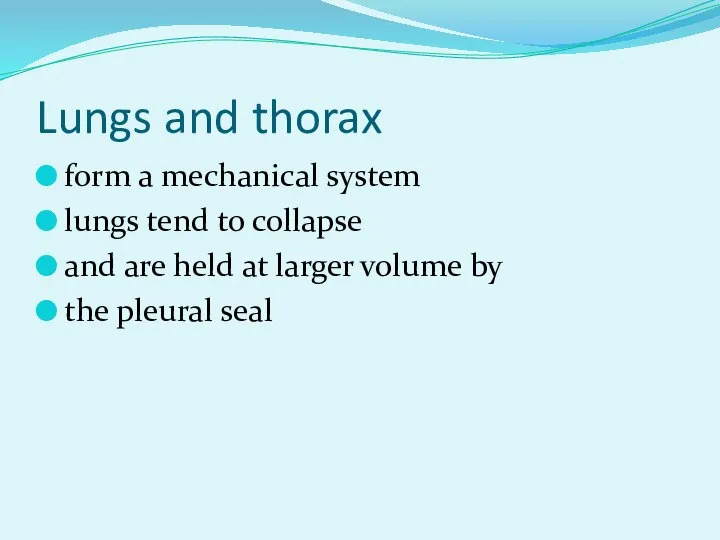
larger volume by
the pleural seal
Слайд 4Pleural fluid
a thin layer of fluid
between visceral and parietal pleura
ensures that lungs

fill thoracic cavity
and change volume as thorax does
Слайд 5Pneumothorax
if the integrity of the pleural seal is broken
lungs will tend to

collapse
Слайд 6Equilibrium of forces
lungs pull in and up
thoracic cage pulls out
passive stretch of

diaphragm pulls down
Слайд 7At the resting expiratory level
all forces in balance
like a set of springs
if
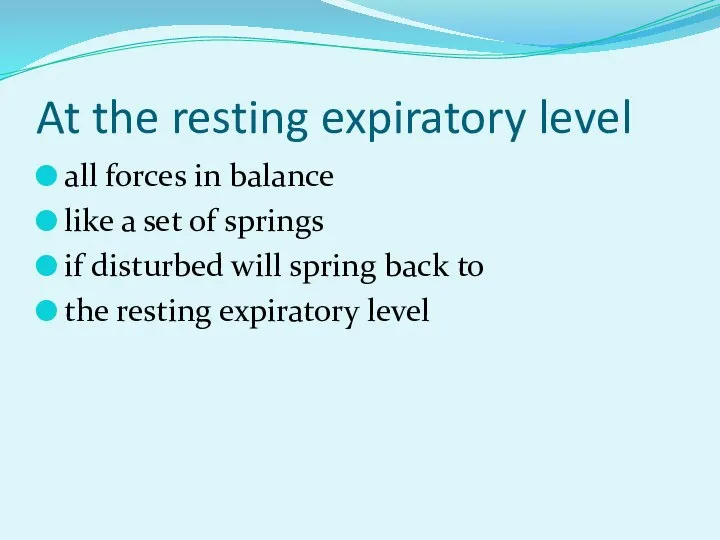
disturbed will spring back to
the resting expiratory level
Слайд 8Breathing in
from resting expiratory level
is active
mainly by contraction of diaphragm
and intercostals

Слайд 9Breathing out
to resting expiratory level
is passive
just stop breathing in
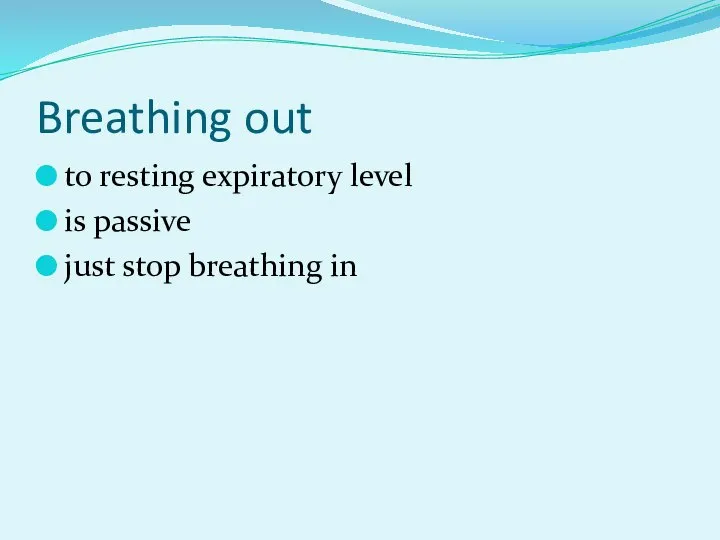
Слайд 10In quiet breathing
inspiration is active
expiration is passive
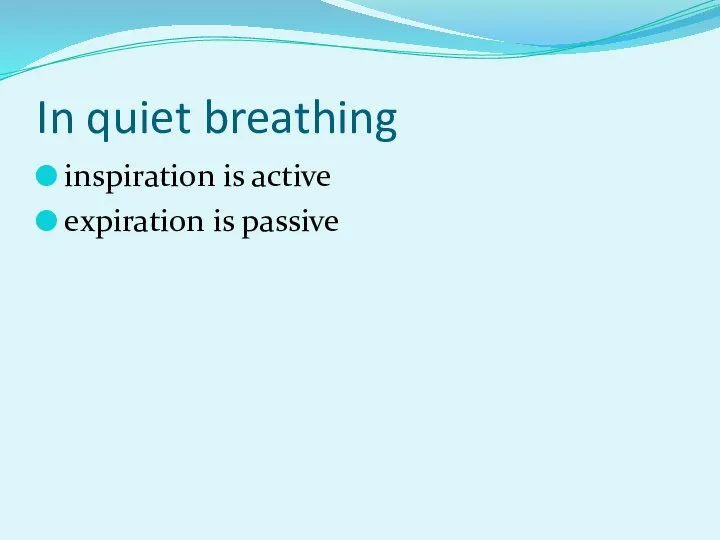
Слайд 11Forced expiration
breathing out beyond resting expiratory level
requires force
exerted by abdominal muscles
then inspiration

to resting expiratory level is passive
Слайд 12Work of breathing
in quiet breathing
most effort required to stretch the lungs
if
diaphragm cannot
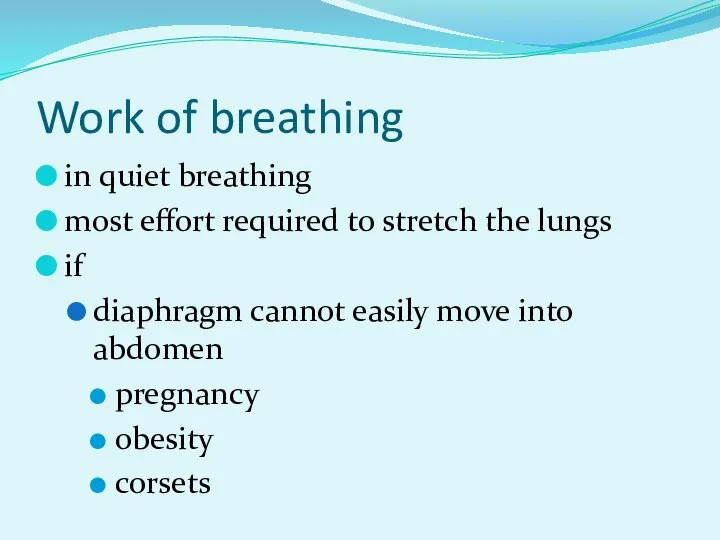
easily move into abdomen
pregnancy
obesity
corsets
Слайд 13Lung compliance
the stretchiness of the lungs is known as compliance
volume change per

unit pressure change
higher compliance means easier to stretch
Слайд 14Elastic properties of the lungs
airways have elastic walls
but elastic tissue cannot explain
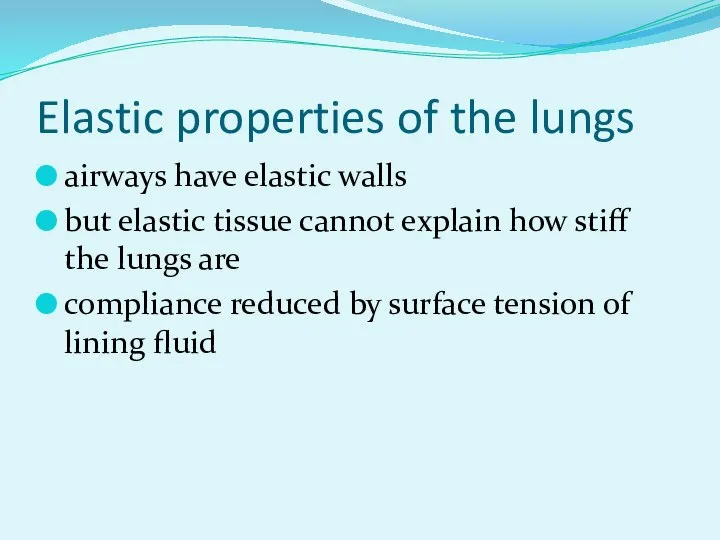
how stiff the lungs are
compliance reduced by surface tension of lining fluid
Слайд 15Surface tension
interactions between molecules at surface of a liquid
makes the surface resist
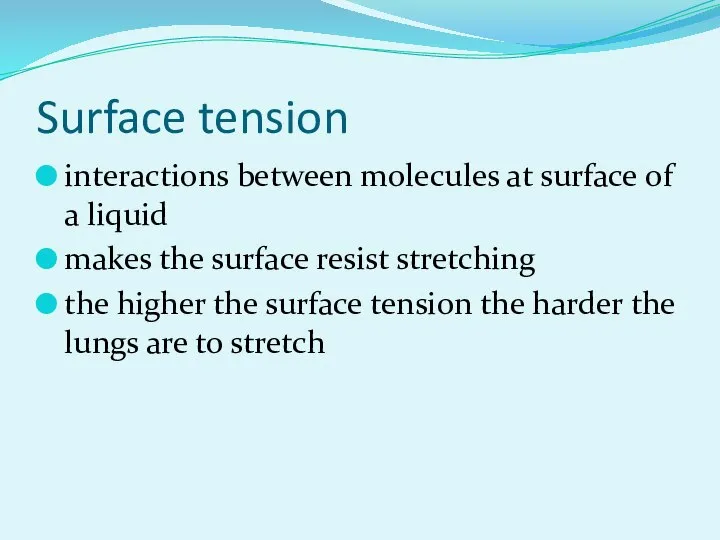
stretching
the higher the surface tension the harder the lungs are to stretch
Слайд 16Surface tension in the lungs
at low lung volumes much less than expected
if

lungs lined with saline
something is reducing surface tension
Слайд 17Detergents
reduce surface tension by disrupting interactions between surface molecules
lung has a mixture
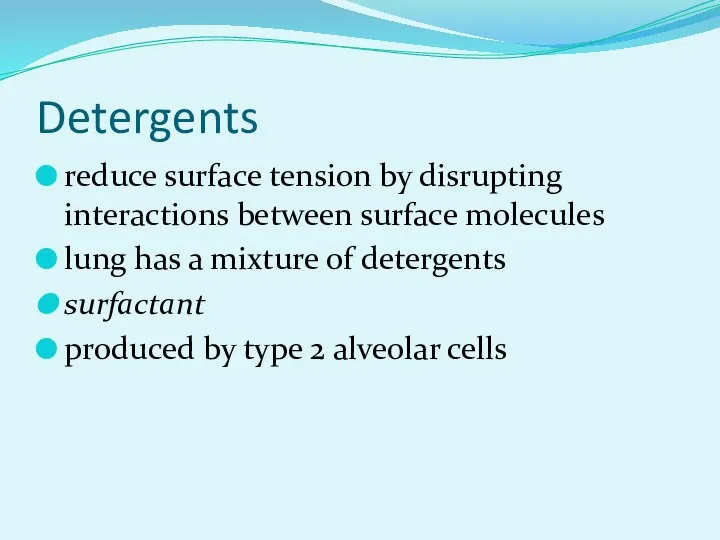
of detergents
surfactant
produced by type 2 alveolar cells
Слайд 18Surfactant
reduces surface tension when lungs are deflated
but not when fully inflated
so little
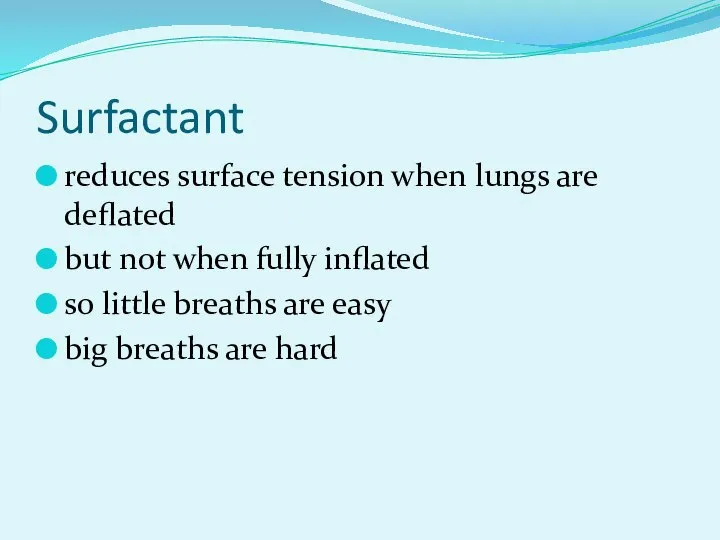
breaths are easy
big breaths are hard
Слайд 19Bubbles
formed when a film of fluid surround gas
film shrinks to compress gas
until
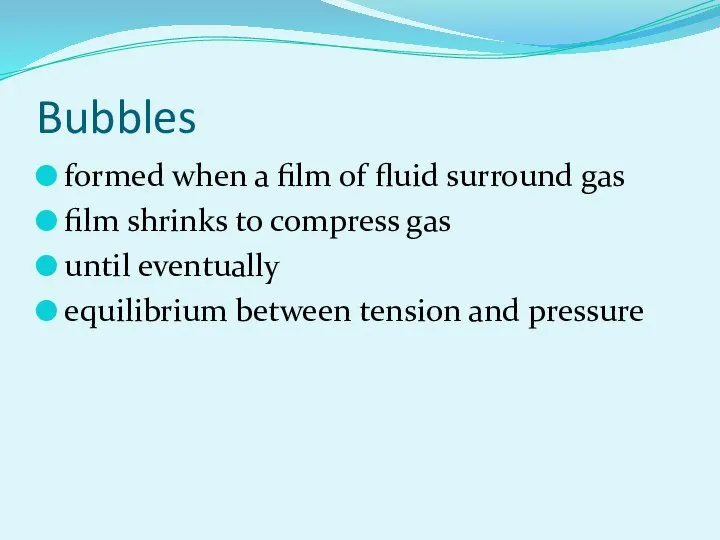
eventually
equilibrium between tension and pressure
Слайд 20Laplace’s law
pressure = 2 x surface tension/radius
big bubbles have low pressure
little bubbles
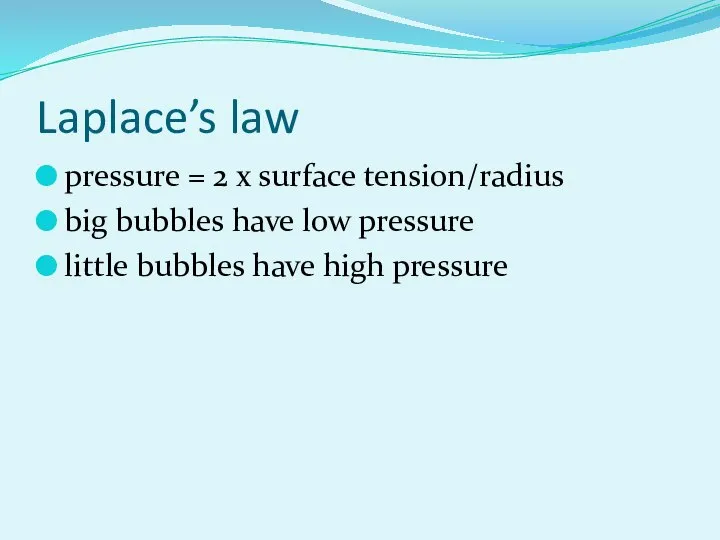
have high pressure
Слайд 21Law of bubbles
if a big bubble is connected to a small bubble
air
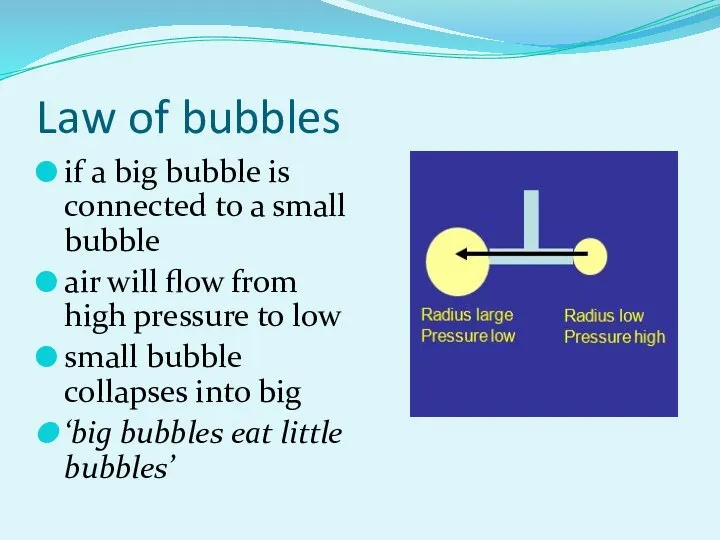
will flow from high pressure to low
small bubble collapses into big
‘big bubbles eat little bubbles’
Слайд 22Bubbles in the lung
alveoli form an interconnecting set of bubbles
if Laplace’s law
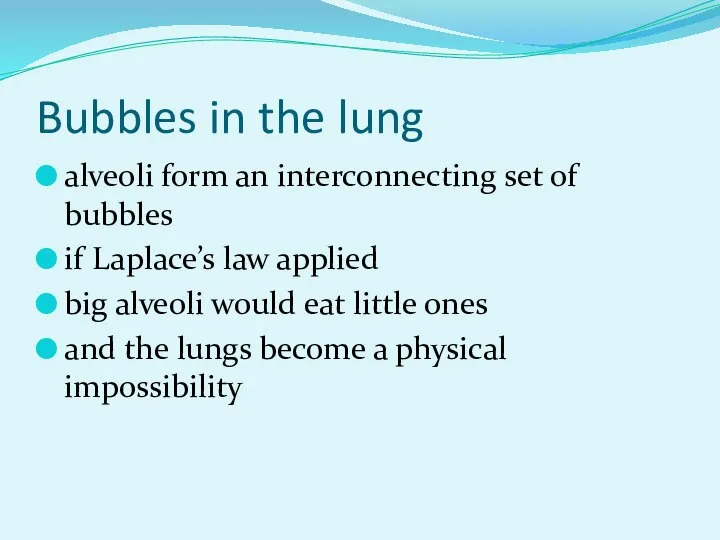
applied
big alveoli would eat little ones
and the lungs become a physical impossibility
Слайд 23Surfactant
as alveoli get bigger
surface tension in their walls increases because surfactant is

less effective
so pressure stays high
and stops them eating little alveoli
Слайд 24Respiratory Distress Syndrome
babies born prematurely
have too little surfactant
lungs very stiff
few, large alveoli
breathing
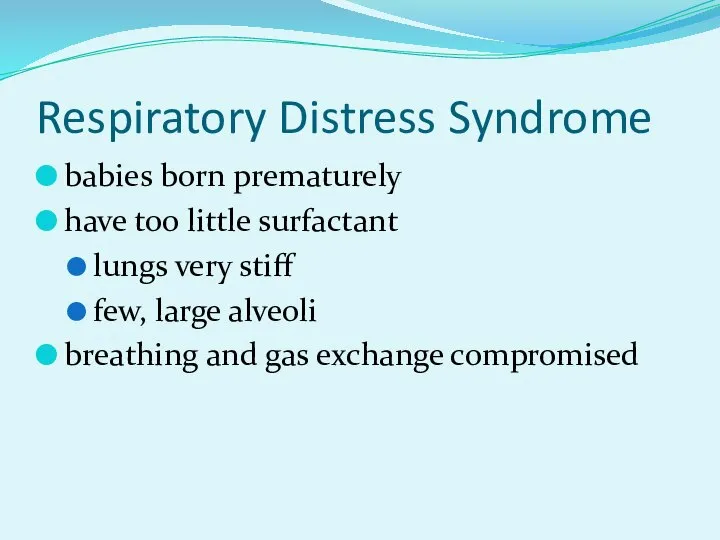
and gas exchange compromised
Слайд 25Moving air through airways
remember Poiseulles law
small tubes have high flow resistance
many airways
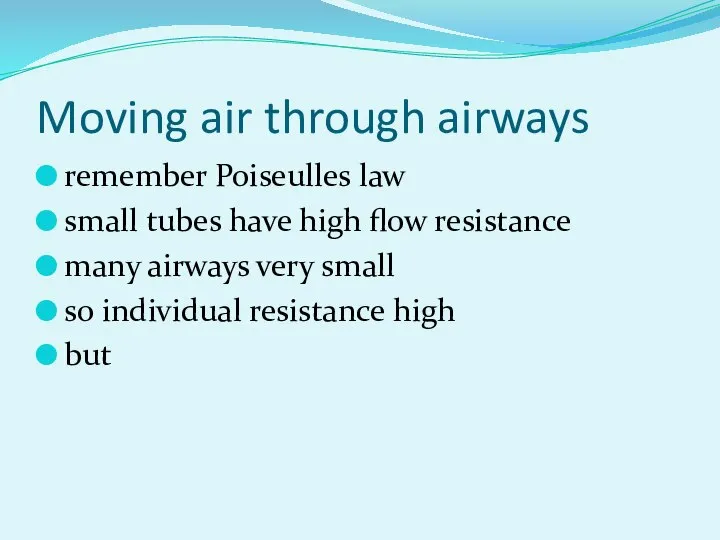
very small
so individual resistance high
but
Слайд 26Over the whole tree of airways
at each branch
the increase in the number
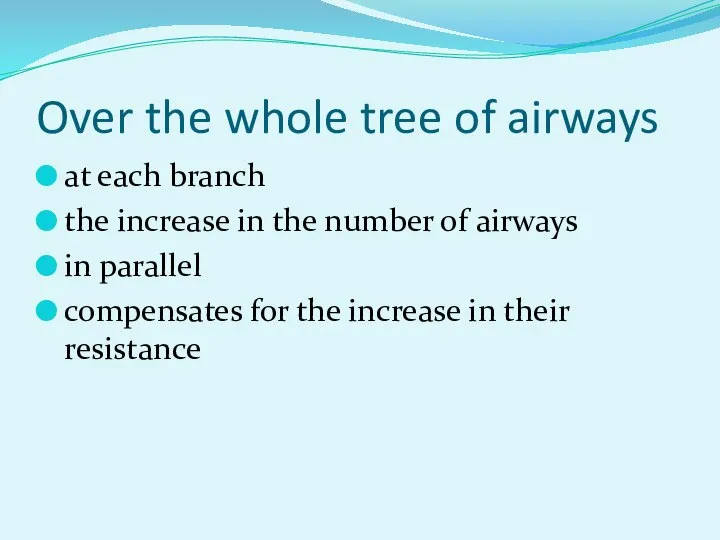
of airways
in parallel
compensates for the increase in their resistance
Слайд 27Airway resistance
at normal lung volumes in normal lungs
highest resistance in the trachea
lowest

in the small airways
so breathing is easy
Слайд 28Forced expiration
when the lung is compressed
small airways are narrowed
resistance increases dramatically
and air
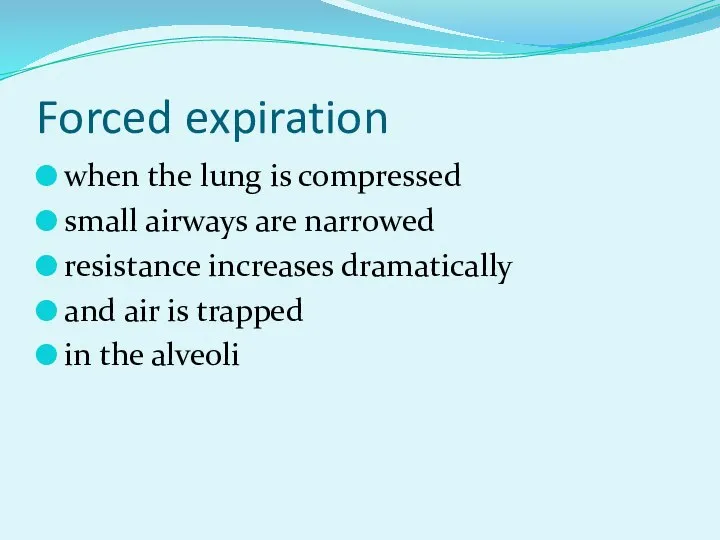
is trapped
in the alveoli
Слайд 29Obstructive airway disease
if the small airways
are narrowed by disease
asthma
chronic bronchitis
resistance increases much

earlier in expiration
breathing out can become very difficult




























 My Language Portfolio
My Language Portfolio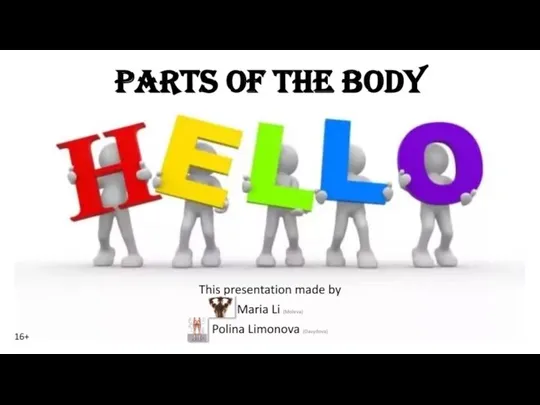 Body
Body Новая программа английского языка
Новая программа английского языка Listening language practice
Listening language practice Happy Halloween
Happy Halloween Conversation questions. Jobs and occupations
Conversation questions. Jobs and occupations Phonics. Short vowels pronunciation exercises. Phonics reading comprehens
Phonics. Short vowels pronunciation exercises. Phonics reading comprehens Past simple. Простое прошедшее время
Past simple. Простое прошедшее время Question Tags
Question Tags Презентация на тему Health care in Russia
Презентация на тему Health care in Russia  Cheks
Cheks Let’s count!
Let’s count! Shopping
Shopping Holidays in England
Holidays in England Letter combinations
Letter combinations Правила по модулю 9 a
Правила по модулю 9 a Trick or treat
Trick or treat Доминация английского языка
Доминация английского языка My profession
My profession Then and now
Then and now New year warm up collage
New year warm up collage Алгоритм написания личного письма на английском языке
Алгоритм написания личного письма на английском языке Притяжательные местоимения
Притяжательные местоимения Plurals
Plurals Презентация на тему Life in the future
Презентация на тему Life in the future  Достижение личностных и предметных результатов
Достижение личностных и предметных результатов Внеклассное мероприятие по английскому языку
Внеклассное мероприятие по английскому языку Popcorn time author James Dashner
Popcorn time author James Dashner